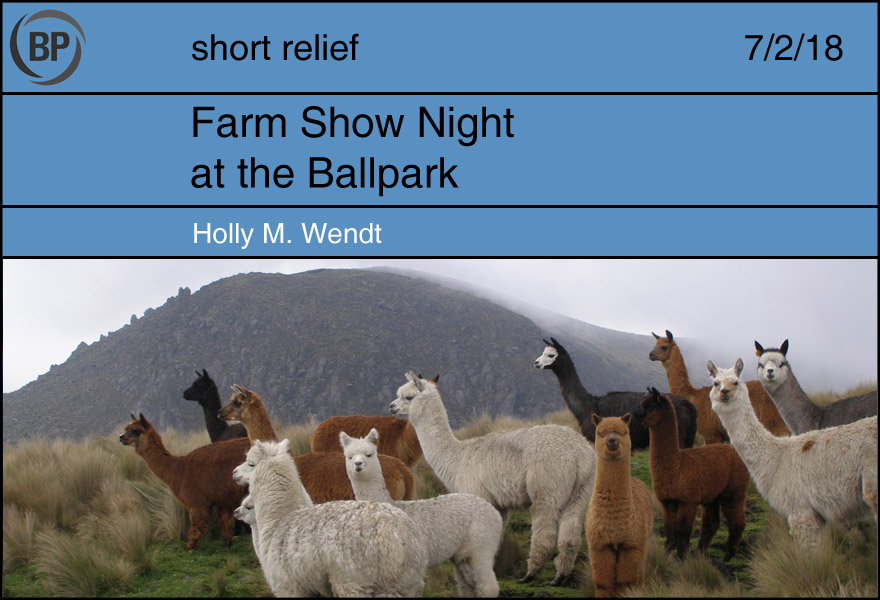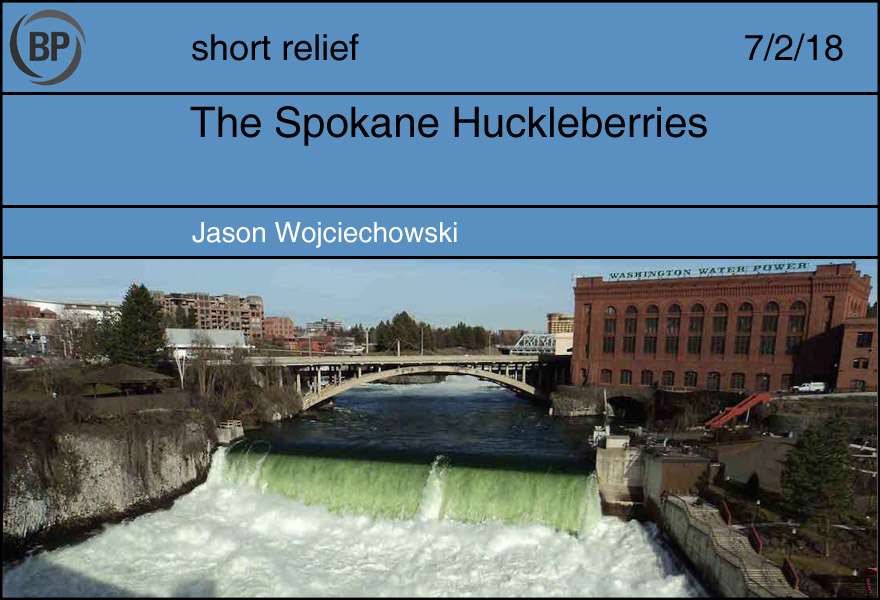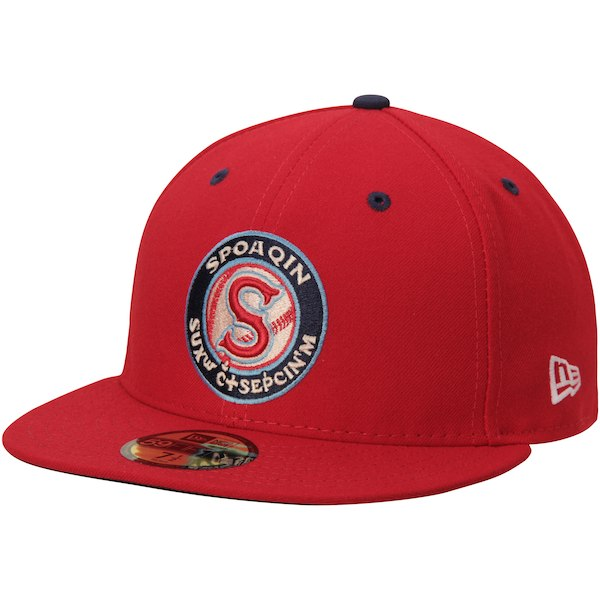
That Pennsylvania has a lot of farms is relatively well known, and in Lancaster County, epicenter of Amish Country and home of rolling green fields and orchards of many scales, agriculture seems to inform everything—even the baseball.
The city of Lancaster houses the Lancaster Barnstormers, denizens of the independent Atlantic League and former employer of such MLB notables as Phil Coke, Matt Reynolds (the pitcher), and Jerome Williams. In late June—just as strawberry season closed and cherry season began—the Barnstormers sponsored Farm Show Night at the Park.
The eccentricities of minor-league and independent-league-park theme nights and promotions are well-traveled roads, but they’re not without their charms, and frequently that charm is born of juxtaposition: a thing that is not like baseball shows up in the park, and the ticket purchase that was at first predicated primarily on observation becomes an opportunity to encounter.
In Lancaster last weekend, the opportunity to encounter meant livestock populating the grassy berm rising above left and center. Five rabbits bounced in a hay-bottomed enclosure, black and white and dark fawn, not only tolerating people’s interest but actively seeking it out. A full-grown Lineback cow and a yearling calf waited mellowly beneath an awning. A lot of people have never been within arm’s length of a grown milk cow, one’s size and weight and funny little trick of leaning ever-so-gently on the woman holding the halter. To let a cow lick your hand with its giant tongue or to offer one a handful of hay is not to become a farmer or really understand even one-hundredth of the job, of course, but it is a start.
(A lot of people have also never watched a therapy pig named Charlie play a miniature piano either, and the night offered that as well. For a moment, no one had to encounter anything except happiness.)
After the bottom of the seventh, the four alpacas who’d been part of the living display came onto the warning track to run a short race with their handlers, in two sets of two. All four alpacas went out to left-center together, but when the time came for the first two to run toward the foul line, they were entirely uninterested. The reasons for this may be myriad: it’s unlikely the alpacas had any extensive experience in baseball stadiums, and the lights and the noise may have vexed them. Or, as alpacas are herd-inclined and the two younger alpacas were the racers in the first heat, they may have simply balked at running toward a lonesome unknown, a goalpost that didn’t look like anything they’d seen before.
Past and future are also juxtaposed in independent baseball. Where they meet can only be the present, but Lancaster this year is home to Ryan Casteel, a former Rockies prospect I saw play rookie ball years ago in the windswept confines of Mike Lansing Field in Casper, Wyoming; Grant Desme, former second-round pick and recent subject of a really nice profile by R.J. Anderson; Darian Sandford, who spent last year in the Nationals’ system; and every player waiting for the call—whether to begin their journey or walk again a familiar hall.
Rosters in independent baseball change frequently, and sometimes the defense is a little uncertain, the strike zone perhaps triangular, but at Farm Show Night in the Park, the bunnies were so, so soft. The fireworks—every Saturday at home—were as bright as anyone could want.

Last week, after a visit with family in western Washington, we traversed the state to see a couple of minor-league teams we had not yet hit. First stop: Spokane, mere minutes from the border with Idaho. The drive was lovely, crossing, as we did, from the evergreen forests of the western part of the state to a reminiscent-of-home, arid center to the distinctive eastern Washington/Idaho sparse forests of short pines. We snacked on cherries, stopped for lunch at a Mennonite-run bakery, and listened to a lot of country and folk music on Spotify. I cried once because a song reminded me of our departed cat Joey.
Spokane itself was surprisingly bustling for a short-season A-ball town, with multiple colleges, breweries, at least one distillery (I snagged a 375-mL bottle of bourbon made with local corn), a riverside park that incorporated views of the waterfalls that provided early power to the town, and city-run botanical gardens with no entry fee.
What it also had was a baseball team named the Indians. I get a hat, ideally either the main home or road cap, at every minor-league stadium I visit. My wife tries to get a shirt, though she often doesn’t see anything she likes. (“Women love pink” seems to be the overriding concept of much ladies minor-league apparel.) Teams like Spokane add a layer of anxiety to this venture. Will there be clothing that does not incorporate Native American imagery? A hat without a feather or a tomahawk?
But wait, a twist:

Spokane, it turns out, partnered with the local Spokane Tribe to develop logos that incorporate the Salish language. The team further claims that the name “Spokane Indians” is a tribute to those particular humans, not to the general concept of Indians.
It’s a nice gesture, but I’m not sure that any of this helps. The harms of reducing people to sports mascots might be mitigated by partnerships, by highlighting indigenous languages, by avoiding the worst of stereotyping and appropriation (slurs, war-related imagery), but can they actually be eliminated? Will seeing the language on hats and jerseys cause additional Tribe members to learn their language and prevent it from dying off? I am not optimistic about the answers to these questions, and I think Spokane could do just as well to name their team the Waterfalls or the Marmots or the Huckleberries.
Thank you for reading
This is a free article. If you enjoyed it, consider subscribing to Baseball Prospectus. Subscriptions support ongoing public baseball research and analysis in an increasingly proprietary environment.
Subscribe now